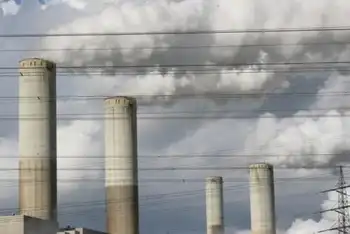ATC transmission upgrades shows savings
By Business Wire
Arc Flash Training CSA Z462 - Electrical Safety Essentials
Our customized live online or in‑person group training can be delivered to your staff at your location.

- Live Online
- 6 hours Instructor-led
- Group Training Available
ATC demonstrates in recently released figures that its more robust high-voltage transmission system has helped reduce electrical output at peak times equivalent to a 125-megawatt generating plant.
“Our investment may be one of the largest energy savings programs in the Upper Midwest,” said José Delgado, ATC president and chief executive officer. “The more efficient high-voltage lines and newer infrastructure that we’ve placed in service results in lower line losses. We can translate this into significant environmental benefits. With the recent approval of the final report by Wisconsin Governor Jim Doyle’s Task Force on Global Warming, this is good news.”
Flora Flygt, director of ATC Transmission Planning, explained, “Transmission system improvements also function as major energy efficiency upgrades on the electric system because of the sheer volume of energy they carry. Even a small increase in the efficiency of the grid’s power-carrying capabilities can yield significant energy-saving and carbon-reducing results.”
She said the savings are due to reduced electricity losses. “In simple terms, our improvements mean that the wires do not get as hot, which results in substantially lower electricity losses in the process of moving power into communities,” said Flygt.
Lower losses between the generation source and the delivery point mean a reduction in the required electricity output needed to transport power and meet demand. If the generation source is a fossil-fueled power plant, the result is lower carbon emissions. Losses on ATCÂ’s high-voltage network are relatively low at around 2.2 percent of energy carried.
ATCÂ’s energy savings calculation compares the companyÂ’s system as it was in summer 2001 with the improved system in place by summer 2007. The reduced losses over the 40-year life of these projects equate to:
• 16.2 million megawatt hours of electricity saved (enough to power 38,000 homes each year).
• 15 million tons of CO2 emissions associated with producing lost energy are eliminated.
• The equivalent of a 125-megawatt generating plant not having to be built to serve peak demand.
The figures above do not include the savings from the 220-mile Arrowhead-Weston 345-kilovolt transmission line, which ATC placed in service in January 2008. The reduction of losses associated with the Arrowhead-Weston transmission line is estimated at roughly 24 megawatts of on-peak usage.
ATCÂ’s program of rebuilding and up-rating existing transmission lines and constructing new ones results in power being carried more efficiently than it would be over the older, lower-voltage grid in three ways:
• Rebuilding existing power lines using a larger conductor enhances efficiency. The larger conductor reduces the resistance of the lines, which reduces losses.
• Adding new transmission lines to an overloaded system divides power flows over multiple paths, which reduces electric current and losses on each individual power line.
• Installing higher voltage lines allows demand to be met with lower levels of current and lower line resistance, which also reduces losses.
On the transmission system, extra-high voltage lines typically provide the greatest potential for energy loss reduction. ATC expects to add four additional 345-kilovolt transmission lines in the next five years, which will reduce losses even further:
• Gardner Park – Central Wisconsin is a 50-mile project in Central Wisconsin scheduled to be energized in spring 2009.
• Morgan - Werner West is a 50-mile project in Central Wisconsin scheduled to be energized in spring 2009.
• Paddock - Rockdale is a 35-mile project in Southern Wisconsin expected to be on line in April 2010.
• Rockdale - West Middleton is a 35-55 mile proposed project in South Central Wisconsin slated to be in service in spring 2013.











